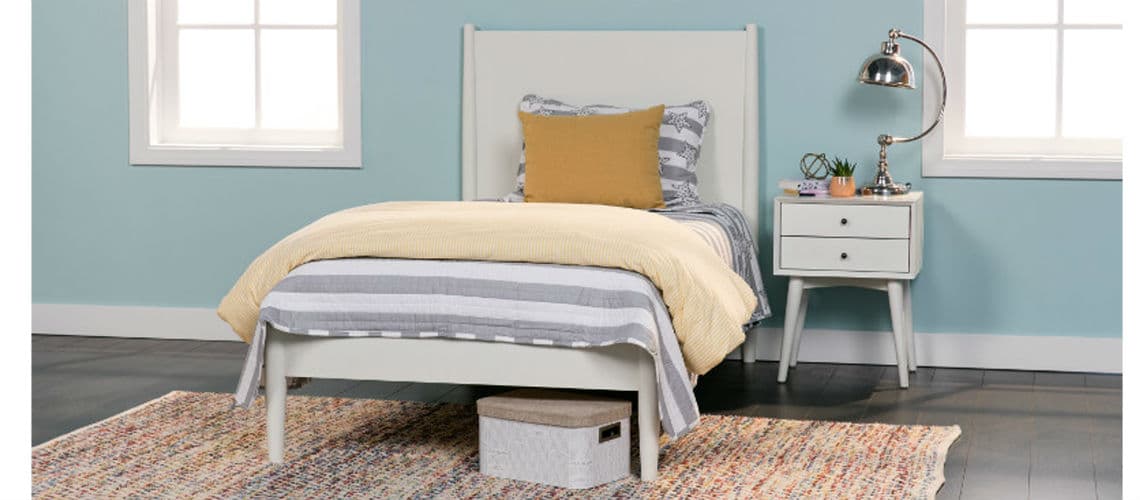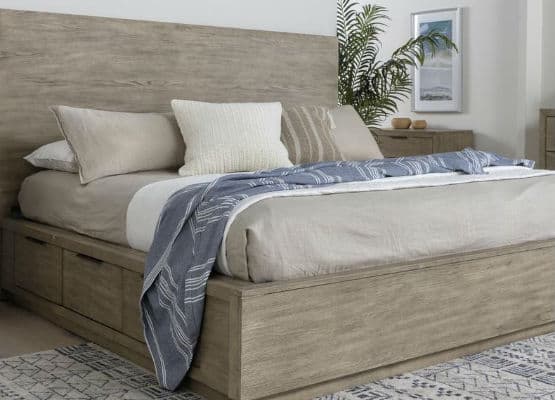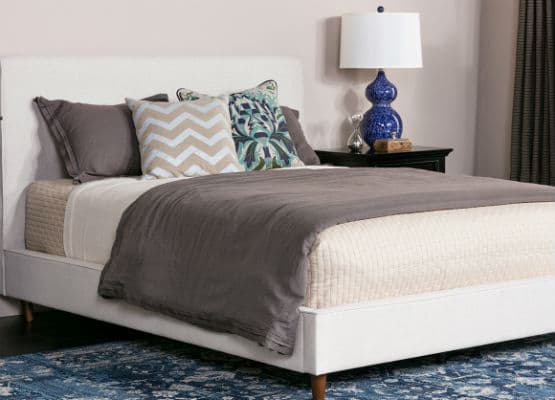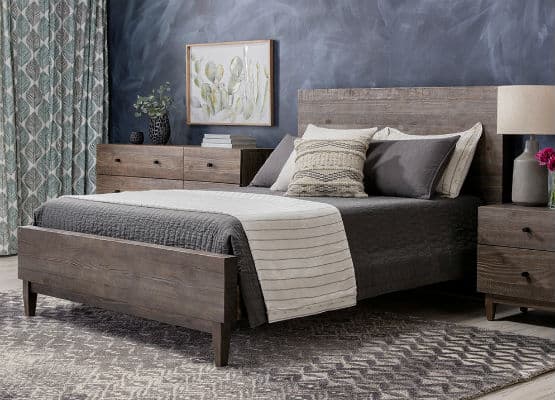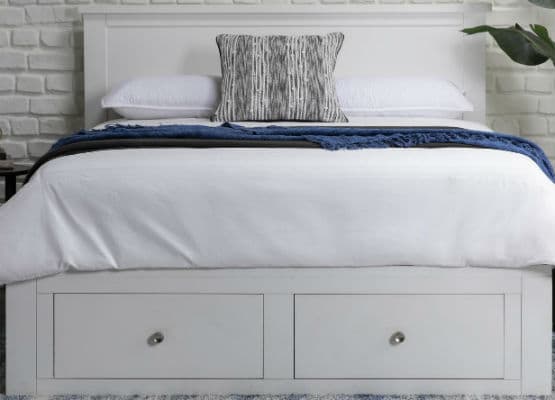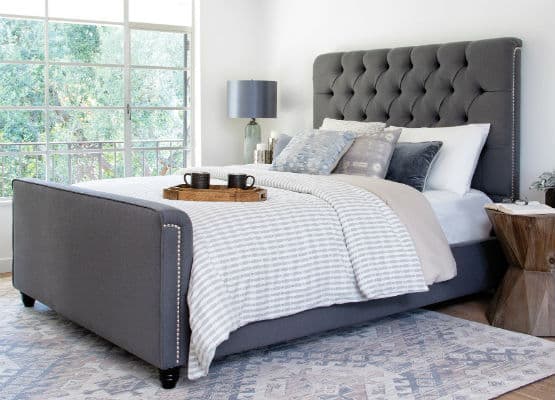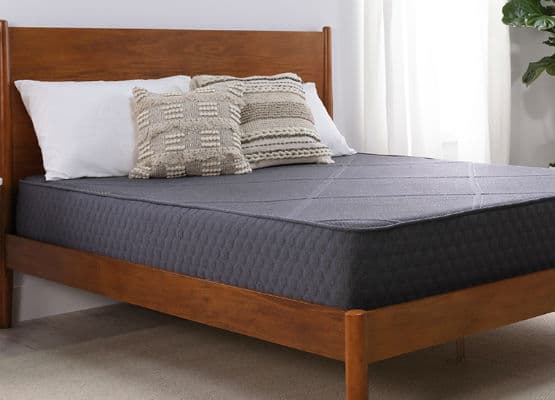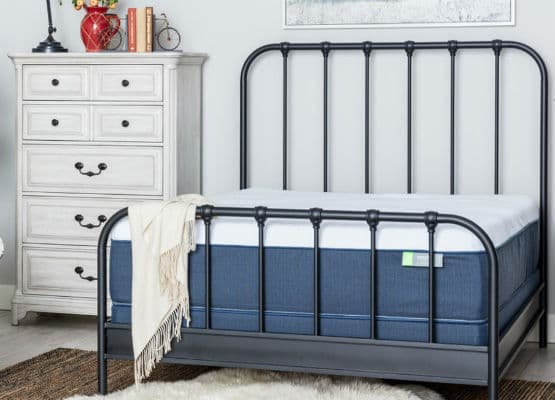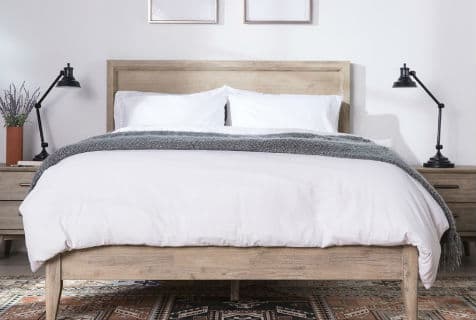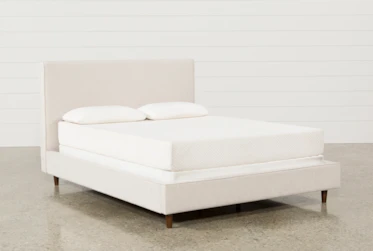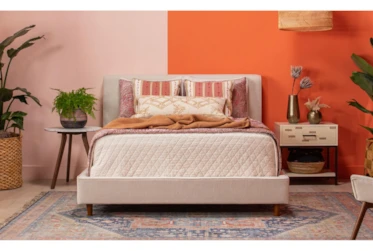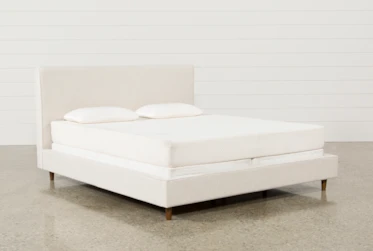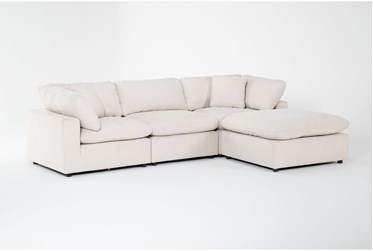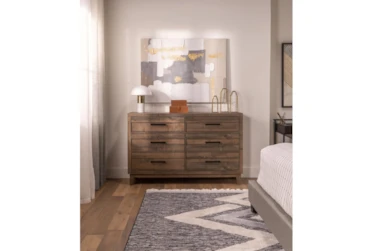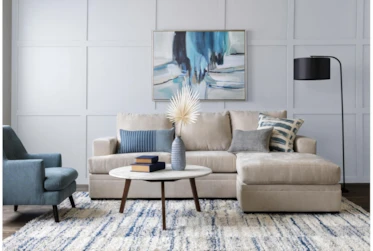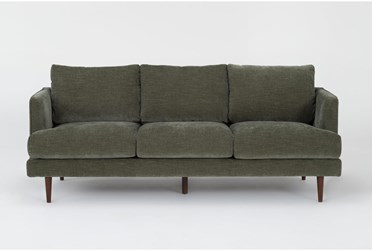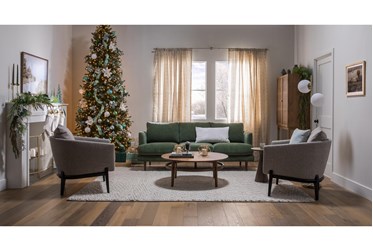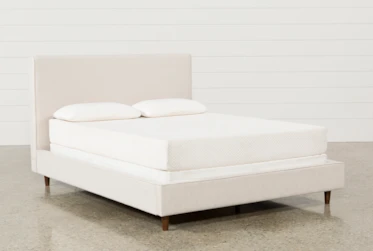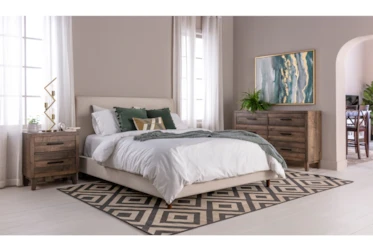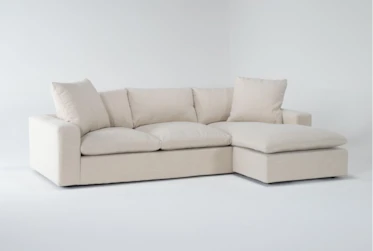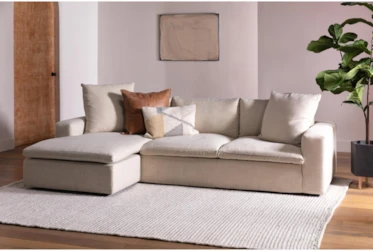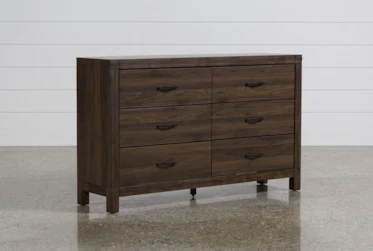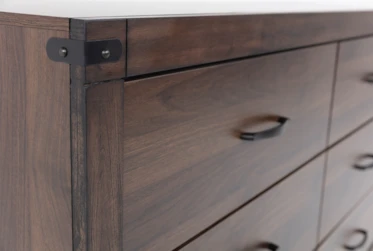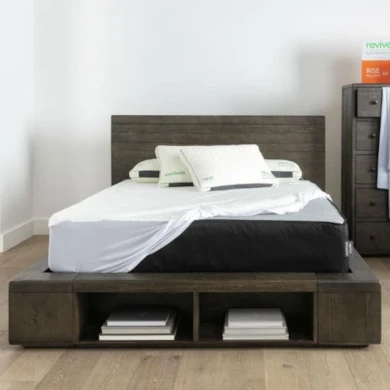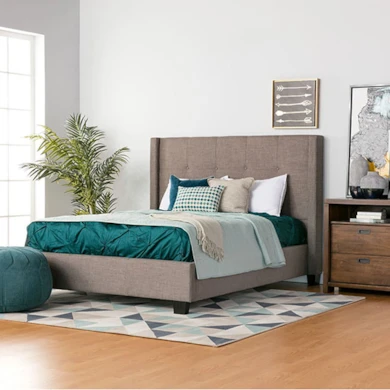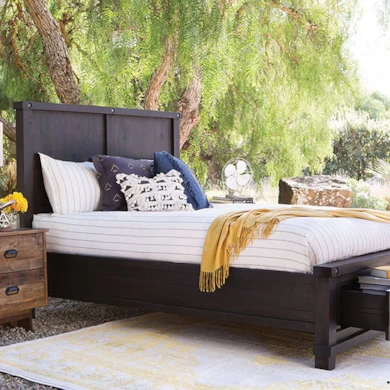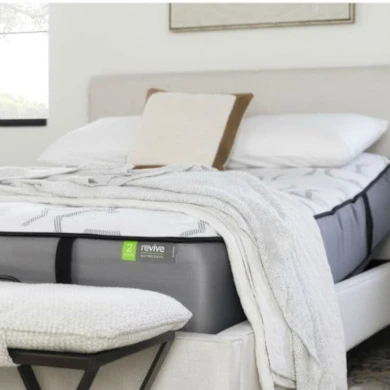What’s the Difference Between a Panel Bed and a Platform Bed?
What Is a Panel Bed?
What Is a Platform Bed?
While more traditional platform beds feature a sleek, minimalistic look – sans headboard or footboard – modern platform beds today incorporate a variety of style and design features (including both headboards and footboards).
Can you use a regular mattress on a platform bed?
You can indeed use any type of mattress on a platform bed. Memory foam, innerspring, hybrid, plush, firm, medium all will work with both panel and platform beds. As long as the size is correct (King mattress for King bed, and so on), and the mattress has a base designed for full mattress suppport (usually this means five or more slats), it is fine to place any type of regular mattress on a platform (or panel) bed.
How a Slatted Base Can Lead to Cooler Sleep
If you tend to sleep hot, a slatted base could be your key to a cooler night’s sleep.
Because they are designed to perform the function of both bed and foundation, some platform bed designs will feature a solid base – without slats. While this type of base works extra hard to provide extra support, it can also make it hard for the mattress to breathe.
Luckily, sleeping too hot as a result of a stuffy bed base is a problem that’s easy to solve –with a mattress foundation. (A solid platform bed does not require a foundation, but it also won’t hurt if you do use one.) Look for one composed of slats (with space in between each slat); use it as a buffer between the bed base and your mattress to ensure a more breathable sleep.
For those who want the extra boost in breathability, without the “bulk” that can come from a box spring, a bunky board is the way to go. Like a box spring, a bunky board is made with spaced-out slats for breathability. Unlike a box spring, a bunky board is designed extra-slim for a sleeker look and feel.
While panel beds are designed to support a mattress and a mattress foundation, platform beds are designed to take the place of a mattress foundation (so that you can place a mattress directly on a platform bed). Because of this, a panel bed (by itself) won’t support a mattress as completely as a platform bed will (by itself), and it is ill-advised to place a mattress directly on a panel bed without any additional support. As a general rule of thumb, a bed that features less than four bed slats (slats = those horizontal boards you see connecting the bed’s sides – where the mattress goes) does require a box spring or foundation; a bed that features five or more bed slats does not require a box spring or foundation. Panel beds fall under the first category; platform beds, the second.
Panel Bed vs. Platform Bed: What Are the Different Styles?
In terms of appearance, modern platform beds and panel beds often share similar design elements – ranging anywhere from tufted upholstered headboards to under-bed drawer storage. They do, however, hold a few key distinctions:
- Panel beds are often more traditional in appearance. In the early days of many mattress manufacturers, the mattress and the box spring went hand in hand – without the alternatives of bunky board, adjustable base and other types of support available today. As a result, the raised-bed look that comes from placing a box spring under a mattress – which rose in popularity in the early 20th century – is today associated with a more traditional aesthetic.
- Platform beds are often more contemporary in appearance. The lower, mattress-without-a-box-spring look became widely embraced later on – specifically, as bed designs became stronger and more supportive. As a result, the lower-to-the-ground platform bed is often, more than any other bed type, associated with the contemporary style.
Where Did Panel Beds and Platform Beds Get Their Names?
Though their names are often used interchangeably, panel beds and platform beds mean very different things. While the distinction between the meanings is clear, how the name got attached to each is often not. Here’s the basic drilldown:
- Panel beds earned their name thanks to their common uses of broad wood headboards and footboards. In other words, panel beds tend to feature panels of wood.
- While many features are often added and incorporated into its design, such as storage drawers and cubbies, at its core a platform bed is essentially one large – you guessed it! – platform base. (Read: sturdy wood “box,” with a flat, solid, supportive surface.)
Panel Beds vs. Platform Beds: Which Requires a Box Spring?
A panel bed is designed to hold a mattress and a box spring, while a platform bed can be used with a mattress alone and does not requre a box spring. While this is the verdict that many brands stand by, you may find that sometimes, the definitions are interchangeable. Always check the product description to ensure a box spring is (or isn't) required.
Panel Beds vs Platform Beds Inspiration
Read the Latest
Editorial Disclaimer: Articles featuring tips and advice are intended for educational purposes and only as general recommendations. Always practice personal discretion when using and caring for furniture, decor and related items.
